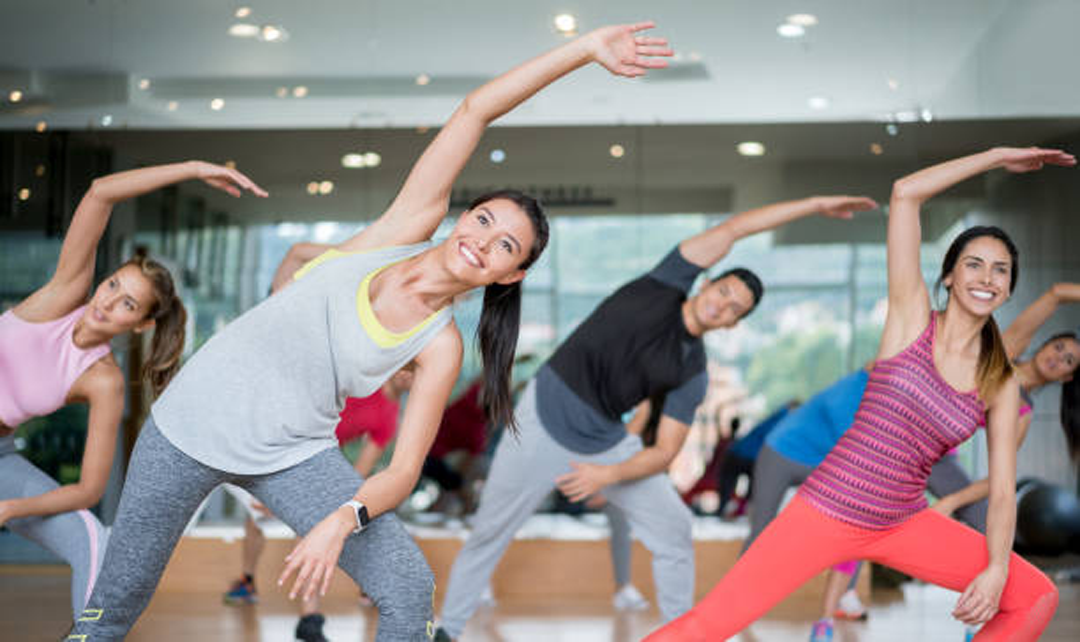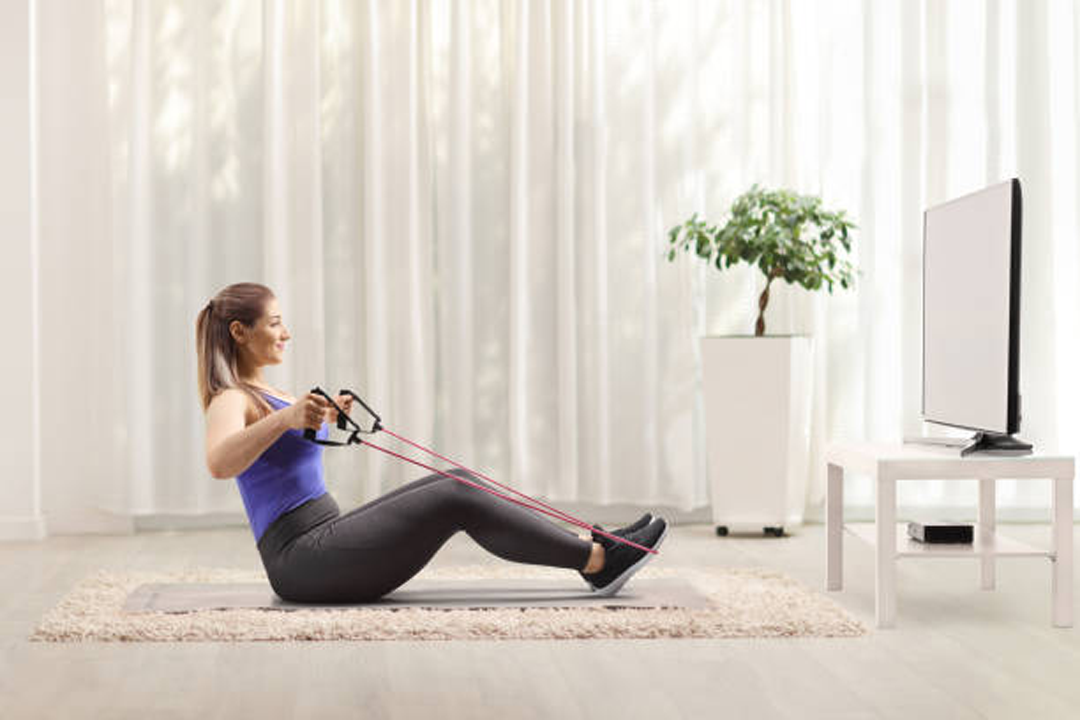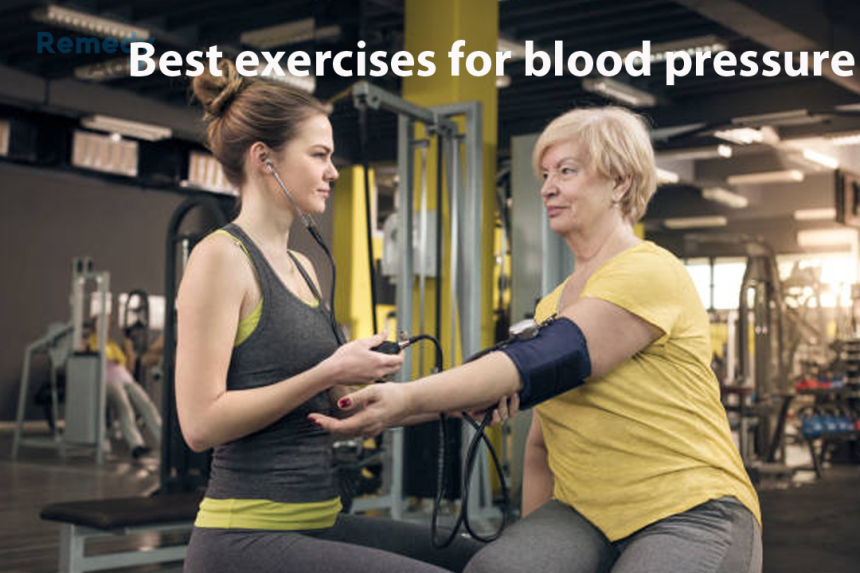If you raised your hand and answered, “Aerobic exercise,’ to the preceding question, you would be only partly correct, at least according to the results of several important studies. It used to be that aerobic exercise (e.g., activity that involves large muscle groups working continuously and rhythmically, such as walking, jogging, bicycling, inline skating, jumping rope, swimming) was believed to be the best exercise for fighting high blood pressure. However, not all studies have come to that conclusion. For example, let’s look at a large review and meta-analysis of ninety-three trials that involved more than five thousand healthy adults and four types of exercise: endurance (e.g., running, biking, swimming, rowing), dynamic resistance (e.g., lifting weights, using exercise bands; also known as strength training), isometric resistance, and combination. All the studies reviewed involved trials that lasted at least four weeks.
Overall, this is what the reviewers found:
- Systolic blood pressure declined after endurance (range: 4.6-2.3 mmHg), dynamic resistance (3.7— 0.011 mmHg), and isometric resistance (14.5— 7.4mmHg) but not after combination training.
- Diastolic blood pressure declined after endurance (range: 3.2—1.7 mmHg), dynamic resistance (4.5-2.0mmHg), isometric resistance (10.3- 2.0mmHg), and combination (3.9-0.48 mmHg) training.
- Individuals with hypertension who participated in endurance training experienced a better reduction in blood pressure than did people with prehypertension or without high blood pressure.
- Improvement in blood pressure after dynamic resistance training was best in pre-hypertensive patients rather than in those with high blood pressure or normal blood pressure.
The conclusion from this large study is that endurance, dynamic resistance, and isometric resistance exercise lowered both systolic and diastolic blood pressure and that the largest drop in systolic blood pressure was among those who participated in isometric resistance exercise. Surprised? Don’t throw away your aerobic walking shoes yet, however.
A study of healthy elderly men (average age range 67.0-71.7 years) looked at the impact of aerobic training alone, combined (aerobic and resistance) training, and no training (controls) on hypertension, obesity, and lipid levels. The two training programs involved moderate to vigorous activity for three days a week for nine months. The researchers found that the combination of aerobic and resistance training was more effective in improving blood pressure and lipid levels than was aerobic exercise or no exercise.
What if you have resistant hypertension? Can physical activity help? A randomized controlled trial conducted in Germany involving fifty adults with resistant high blood pressure sought to answer that question. The participants were assigned to an eight- to twelve-week treadmill exercise program or to no program. Those in the exercise program experienced a significant decline in both systolic and diastolic blood pressures and also improved physical performance.
There’s more. An Indiana University study looked at the impact of exercise on people classified as pre-hypertensive and hypertensive. The authors found that participating in four ten-minute brisk walks daily reduced systolic blood pressure by 6.6 points in pre-hypertensive individuals and by 12.9 points in people with high blood pressure.
And here is the good news for those who say they don’t have time to exercise: the authors found that these brief walks were more effective than taking one long walk when it came to reducing blood pressure. Therefore, if you can put on those walking shoes and take a short brisk walk and/or some time on an exercise bike or jumping rope before work, at break, during lunch, and before or after dinner you can have a positive impact on your blood pressure without putting a significant disruptive dent in your busy day. Added benefits of such workouts can include better sleep, raised metabolism (and possibly help with weight loss), and stress reduction, all great advantages for people who have high blood pressure as well as those who want to prevent it.
Aerobic Exercise Not What It Used to Be

Walking, brisk walking, jogging, bicycling, rowing, and jumping rope are all great aerobic exercises, but let’s face it: aerobic exercise isn’t what it used to be. There’s certainly nothing wrong with traditional aerobic physical activity such as jogging, bicycling, and brisk walking it works great. However, there are other ways to pump up the blood flow, such as Jazzercise, Rollerblading, kickboxing, salsa dancing, and Zumba. And don’t forget the scores of aerobic videos on the market that can help you burn those calories and improve blood flow using innovative moves. It’s important to enjoy your physical activities, because then you will be more likely to continue doing them and thus enjoying the health benefits.
Resistance Exercise
Now let’s get back to resistance exercise. Is it really beneficial for people with high blood pressure? Let’s choose a group for whom this type of exercise may seem least likely to benefit: elderly women. The study involved elderly women with high blood pressure who participated in resistance exercises (e.g., leg presses, pull-ups, biceps curls, and machine bench presses). The women performed three sets of exercises with eight to ten repetitions at two-minute intervals.
During the sixty minutes after they completed the resistance exercises, there was a significant difference in both systolic and diastolic blood pressures. The authors concluded that resistance exercises “may be prescribed safely to this group of patients” and that the improvement in blood pressure “appears to be influenced by the rest that occurred after the protocols and not by exercise.”
Resistance or strength training can be done easily at home using home gym equipment, inexpensive hand weights or exercise bands, or even free equipment. Free hand weights are probably already in your house. For example, you can make your own hand weights using plastic bottles (with handles, such as milk or laundry detergent bottles) filled with sand, or you can use one or two-pound bags of rice or beans! Or you may prefer going to a fitness club or gym, where you can learn how to use various strengthening equipment.
Here are a few resistance exercises that can be done at home or at the gym using hand weights.
Shoulder Exercise
- Stand up straight and place your feet slightly apart. Hold hand weights in your hands and place your arms comfortably at your sides.
- Inhale and shrug your shoulders up toward your ears as high as you can. Hold this position for up to five seconds, and then exhale while you roll your shoulders back and squeeze your shoulder blades together.
- Hold the squeeze for up to 5 seconds, and then relax your shoulders back to your starting position. Do the entire sequence 10 times.
Upper Arm Exercise
- Stand up straight and place your feet slightly apart and your knees slightly bent.
- Hold hand weights in your hands with your palms up and your arms comfortably at your sides.
- Inhale slowly as you tighten your abdominal muscles and curl the hand weights up toward your shoulders. Twist your palms so they are facing you when your hands reach your shoulders.
- Hold the hand weights at shoulder level for a second and then exhale slowly as you gradually lower the weights to your starting position.
- Repeat this exercise 10 times. Over time, you may increase the weight that you lift.
Upper Leg Exercise
- Stand up straight with your feet slightly wider than your shoulder width and your toes pointed slightly out. Bend your knees slightly.
- Hold hand weights in your hands with your arms at your sides and your palms facing inward.
- Inhale slowly as you tighten your abdominal muscles and bend your knees, slowly lowering your body as if you were going to sit in a chair. The goal is to reach a position where your thighs are almost parallel with the floor. However, only go down as far as is comfortable.
- Hold the lowest position for a few seconds, and then exhale slowly as you push up with your heels and rise to your starting position.
- Repeat the exercise 8 to 10 times.
Isometric Resistance Exercise

Would you like to exercise without moving? That’s basically how isometric resistance exercises look on the outside, although on the inside there is some muscle action going on. Isometric exercises involve contracting one or more muscles, although the muscles don’t noticeably change length. The main goal of isometric resistance exercises is to help maintain muscle strength. Isometric resistance exercises are especially helpful for people who are recovering from an injury or who have arthritis or another condition that makes movement painful or limited. In fact, isometrics are typically prescribed as part of rehabilitation or recovery from an injury to help stabilize muscles.
Although isometrics can cause an increase in blood pressure, increasingly research is showing that they can actually lower blood pressure. In fact, a large, important study published in April 2013 in Hypertension revealed some interesting results. The authors reviewed about one thousand studies on nondrug approaches to treating high blood pressure, including exercise, diet, and behavioral therapies. When they looked at the effects of isometric resistance exercises, they were somewhat surprised.
They found, for example, that four weeks of isometric hand grip exercises resulted in significant improvements in blood pressure: a 10 percent decline in both systolic and diastolic blood pressures. One of the studies reviewed appeared in Current Hypertension Reviews, where the authors reported on the use of isometric exercise using a handgrip device. They noted that “in patients recommended for traditional exercise therapies, low intensity isometric exercise is well tolerated and acceptable.”
Individuals who have severely uncontrolled high blood pressure, defined as 180/110mmHg or higher, should avoid isometric exercises. However, research is showing that use of isometric resistance exercises may have an important role in the physical activity program of many people who have hypertension. Just be sure you consult your doctor or physical therapist before you dive into doing isometrics.
Here are a few examples of isometric resistance exercises, including the handgrip exercise that has been shown to help lower blood pressure:
- The handgrip exercise can be done in several ways. One way involves using a tennis ball or other small ball or object that has some give when it is squeezed. Such objects are often handed out for free at health fairs that have booths offering information on blood pressure and heart health. Hold the ball or object in one hand and squeeze it for 60 to 90 seconds. Then switch hands. Repeat the exercise 3 to 5 times with each hand. (Bonus: this exercise can also help reduce stress!) You also can use an athletic gripper device, which can be found in sporting goods stores and department stores. Grippers are available in different resistances, so choose one that suits you. Hold the athletic gripper in one hand and squeeze it for 2 minutes; then switch hands. Repeat the exercise 2 to 3 times with each hand.
- Sit on the floor, an exercise bench, or a table and extend one leg in front of you. Squeeze your thigh muscle, which allows you to fully straighten your leg. At the same time, flex your ankle and lift your toes up. Hold this position for 5 seconds; then rest for 3 seconds. Repeat this exercise 10 times; then switch and do the other leg. Over time, increase the number of contractions to 50 for each leg. This exercise can strengthen your knees.
- Sit on the edge of a chair, exercise bench, or table. Place a small exercise ball, rolled-up towel, or pillow between your knees. Squeeze your knees together and hold the contraction for 10 seconds. Release, relax for 5 seconds, and repeat this exercise 20 times. Over time, increase the number of contractions up to 50. This exercise can strengthen your hips.







